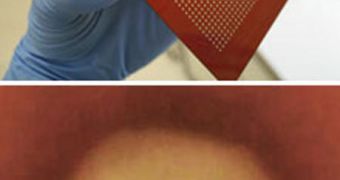Researchers have known for a long time that the human body is equipped to detect and fight precursor cancer cells, but finding the cells responsible for this mechanism has proven to be a somewhat elusive goal for many years. What makes this goal nearly impossible is the fact that precursor cancer cells are usually destroyed before doctors even learn that they existed. As such, there is no way of knowing which cells destroyed them in the first place. Now, scientists have developed a new microfluidic device, a biosensor that can be used to assess the immune cells' ability to destroy cancer cells.
According to Technology Review, the new instrument is able to trap single tumor cells together with single immune system cells, and determine how each of the latter engage and destroy the former. The groundwork for the new project, which is entitled Cell On CHIp bioSEnsor (COCHISE), was done by microsystems engineer Roberto Guerrieri, who is based at the University of Bologna, in Italy. The expert says he undertook this work because he noticed that his colleagues had no means of detecting lymphocytes with anti-tumor properties. The scientist explains that only one in 1,000 immune cells is endowed with this ability.
The new microfluidic platform that Guerrieri developed with postdoctoral researcher Massimo Bocchi features no less than 1,536 microwells, in each of which electric fields are used to basically force contacts between fluorescence-labeled tumor cells and labeled immune cells. A special system then scans the entire platform, and detects in which of the wells the tumor cells have disappeared completely. This allows scientists to identify which of the lymphocytes are endowed with the anti-tumor capacity, Guerrieri says.
“Analyzing a cell we know is active is a large step for research, because you can correlate expression of cytokines or gene expression. You can then identify genetic properties that are probably responsible for the cell being active against the tumor,” Bocchi explains. The duo is also working on devising a mechanism that would allow for the cloning of these cell lines, so that more lymphocytes could be obtained artificially in the lab. The team says that this could help bioengineers develop a new series of treatments against the brutal disease.

 14 DAY TRIAL //
14 DAY TRIAL //